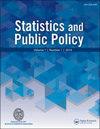Graphical Measures Summarizing the Inequality of Income of Two Groups
IF 1.5
Q2 SOCIAL SCIENCES, MATHEMATICAL METHODS
引用次数: 0
Abstract
Abstract Recently, Gastwirth proposed two transformations and of the Lorenz curve, which calculates the proportion of a population, cumulated from the poorest or middle, respectively, needed to have the same amount of income as top . Economists and policy makers are often interested in the comparative status of two groups, for example, females versus males or minority versus majority. This article adapts and extends the concept underlying the and curves to provide analogous curves comparing the relative status of two groups. Now one calculates the proportion of the minority group, cumulated from the bottom or middle needed to have the same total income as the top qth fraction of the majority group (after adjusting for sample size). The areas between these curves and the line of equality are analogous to the Gini index. The methodology is used to illustrate the change in the degree of inequality between males and females, as well as between black and white males, in the United States between 2000 and 2017, and can be used to examine disparities between the expenditures on health of minorities and white people.两个群体收入不平等的图解测度
摘要最近,Gastwirth提出了洛伦兹曲线的两个变换和,洛伦兹曲线计算了一个人口的比例,该人口分别从最贫穷或中等人口累积而来,需要拥有与最高收入相同的收入。经济学家和政策制定者通常对两个群体的比较地位感兴趣,例如,女性与男性或少数群体与多数群体。本文对和曲线的基本概念进行了调整和扩展,以提供比较两组相对状态的类似曲线。现在,我们计算少数群体的比例,从底部或中间累积起来,需要与多数群体的顶部qth部分拥有相同的总收入(在调整样本量后)。这些曲线和等值线之间的面积类似于基尼指数。该方法用于说明2000年至2017年间美国男女以及黑人和白人男性之间不平等程度的变化,并可用于研究少数族裔和白人在健康支出方面的差异。
本文章由计算机程序翻译,如有差异,请以英文原文为准。
求助全文
约1分钟内获得全文
求助全文
来源期刊

Statistics and Public Policy
SOCIAL SCIENCES, MATHEMATICAL METHODS-
CiteScore
3.20
自引率
6.20%
发文量
13
审稿时长
32 weeks
 求助内容:
求助内容: 应助结果提醒方式:
应助结果提醒方式:


